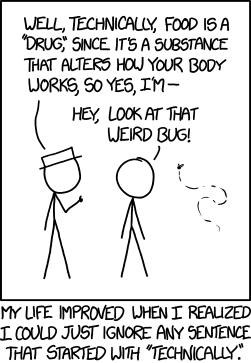Over the last month, we’ve been tracking the Dishoom litigation in the Bombay High Court, a matter which may mark a paradigm shift in Indian copyright jurisprudence. In cases where plaintiffs approach the court for John Doe orders against unnamed online infringers, the Bombay HC imposed strict safeguards against overreach, holding that entire websites could not be blocked in situations where only particular URLs were found to be prima facie infringing.
However, the website-wide scope of John Doe orders was only one infirmity in the current regime. The other massive problem, in status quo, was the lack of transparency with which the blocks were implemented. In one instance that came to our notice, a legitimate business that was hit by an overbroad John Doe order expressed helplessness, since it was unable to access the court and have the order modified to exclude it. Addressing this in his order dated 26 July, which we covered here, Justice Gautam Patel asked ISPs to display clear messages to visitors of the blocked URLs. He ordered that these error messages clearly set out the relevant provisions of the Copyright Act, 1957 that deal with violations and penalties, that they contain a reference to the suit number and date of the order through which the block was mandated, the address of the Plaintiff’s advocates, and a statement to the effect that any person aggrieved by the block could approach the court after serving notice on the Plaintiff.
 In an order dated 9 August, Justice Patel has come down hard on an errant ISP, Tata Communications Ltd. TCL’s counsel pleaded that the display of individuated error pages, as mandated in the BHC’s 26 July order, was “technically not feasible”. TCL said that it could only display a common error page which states that the URL has been blocked “on orders of the Competent Authority”.
In an order dated 9 August, Justice Patel has come down hard on an errant ISP, Tata Communications Ltd. TCL’s counsel pleaded that the display of individuated error pages, as mandated in the BHC’s 26 July order, was “technically not feasible”. TCL said that it could only display a common error page which states that the URL has been blocked “on orders of the Competent Authority”.
One wonders what sort of response TCL was expecting from the judge. In the best of situations, the ground they were standing on was shaky (to put things charitably), but this was not the best of situations for them. They knew they were going before a judge who had demonstrated attention to detailin this matter and (at the very least) an understanding of how the internet worked, requiring specific URLs to be listed by the plaintiffs. In addition, Justice Patel also made clear his intention to change the manner in which the John Doe regime currently worked, in order to prevent its rampant abuse. To approach him with a suggestion like this was almost laughable, and TCL got the smackdown it had coming.
Justice Patel summarily rejected TCL’s application, and registered his disapproval in the strongest words, holding that individuated error pages that complied with the 26 July order could be displayed in “utterly obvious” ways, and that achieving this result would be “elementary to anybody who has done a beginners’ course in web application coding”. In his opinion, “a competent 17-year-old would be able to do this”. The court gave TCL three days to bring itself in compliance, and chided it for “even daring to make this suggestion”. It bears noting that no other ISP has reported any difficulty in complying with the 26 July order, further punching a hole in TCL’s already weak case.
One hopes that this marks the final battle in the arduous crusade towards reforming the John Doe regime, and ensuring that victims of overbroad orders are given speedy access to justice. Carrying the martial analogy further (to borrow another of Justice Patel’s quotable phrases), it appears that the Bombay High Court has fortified itself against plaintiffs eager to use John Doe orders as broadly as possible. Further north, however, the Delhi High Court still appears to be a garrison for plaintiffs, granting wide reliefs and carpet-bombing defendants without regard for collateral damage.
